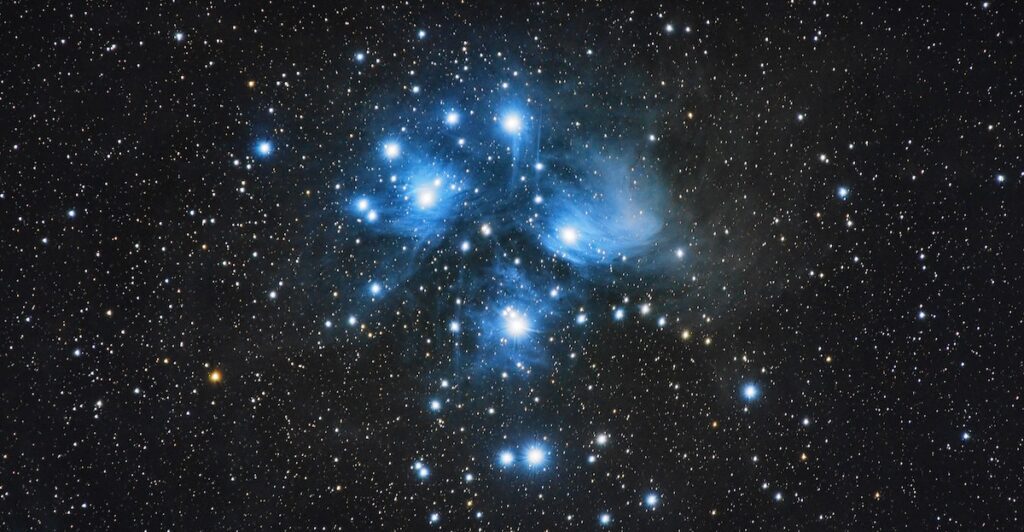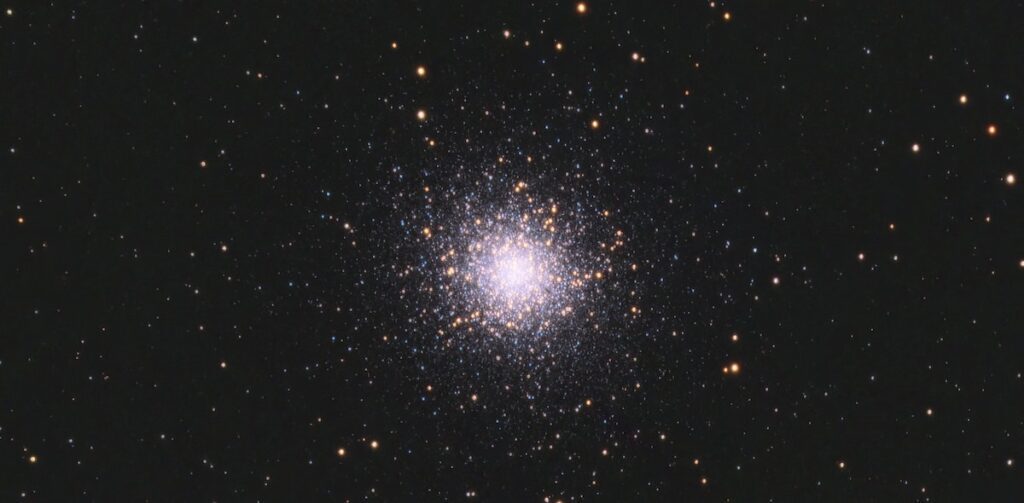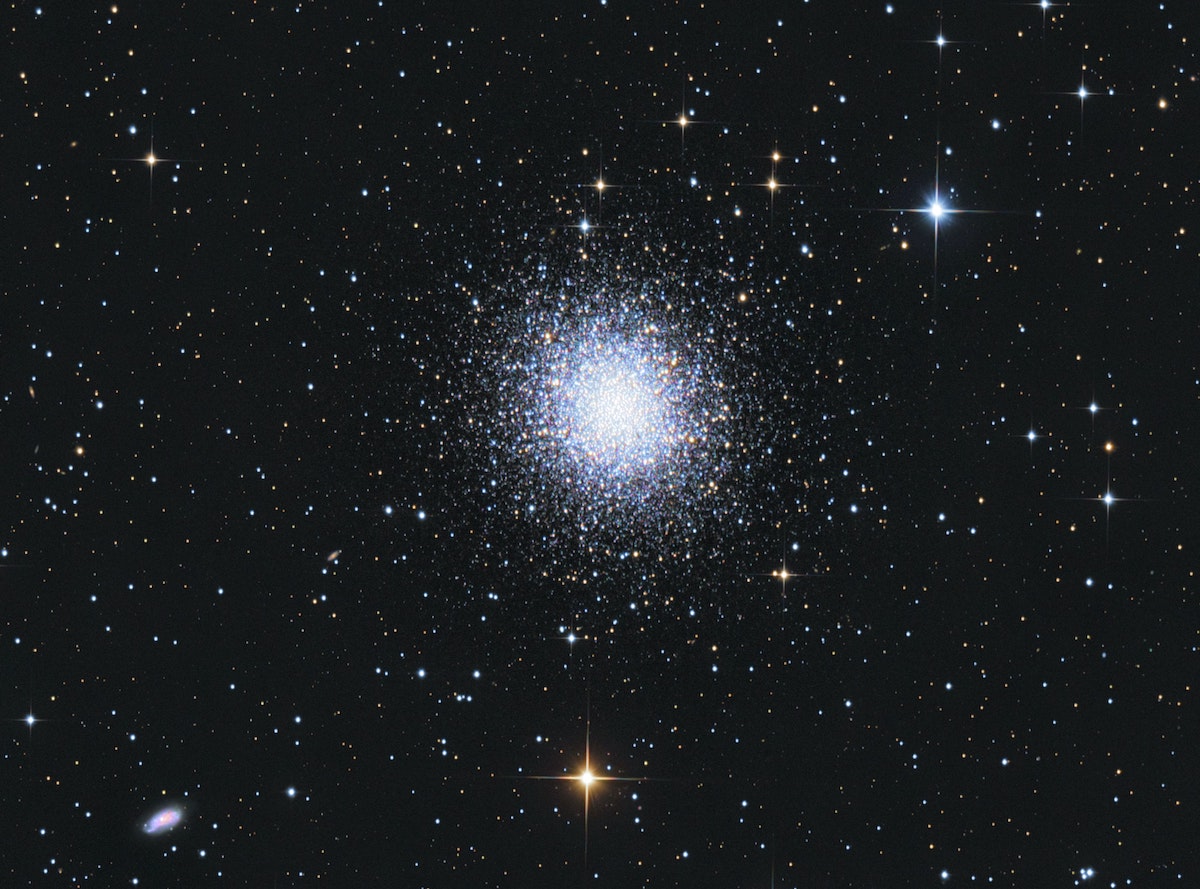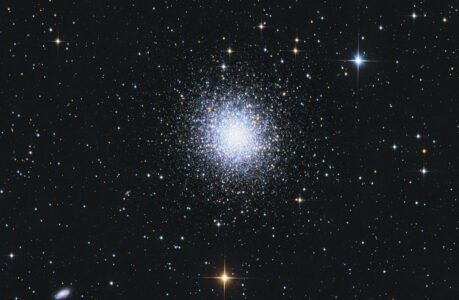Star clusters are groups of stars that are tightly bound together by their mutual gravitational attraction. They come in various shapes and sizes and can be found in most galaxies, including our own Milky Way.
There are two main types of star clusters: open clusters and globular clusters. Open clusters are loose, irregularly shaped groups of stars that are found in the disk of a galaxy. They contain anywhere from a few to a few thousand stars, and are thought to have formed from the same giant molecular cloud of gas and dust. The stars in open clusters are generally young, with an age range of just a few million to a few hundred million years.
Globular clusters, on the other hand, are compact, spherical collections of stars that are found in the halo of a galaxy. They contain hundreds of thousands to several million stars and are much older than open clusters, with ages ranging from 10 to 13 billion years. Globular clusters are thought to be among the oldest structures in the universe.
One of the most notable features of star clusters is their high concentration of stars. In some cases, the density of stars in a cluster can be more than 100 times higher than the average density of stars in the rest of the galaxy. This high concentration of stars makes star clusters ideal laboratories for studying the properties of stars and their interactions.
Star clusters also play an important role in the evolution of galaxies. The stars in a cluster can interact with one another through gravitational forces, which can lead to the exchange of mass and the formation of binary star systems. These interactions can also cause stars to be expelled from the cluster, which can contribute to the overall structure and dynamics of the galaxy.
In addition to their scientific importance, star clusters are also visually stunning. The bright, dense clusters of stars are easily visible through telescopes, and are popular targets for amateur astronomers. Some of the most famous star clusters include the Pleiades, the Hyades, and the Jewel Box.
In conclusion, star clusters are fascinating structures that play an important role in our understanding of the universe. They offer a unique perspective on the properties of stars and their interactions, and provide valuable insights into the evolution of galaxies. Whether you’re an astronomer or simply an admirer of the night sky, star clusters are definitely worth exploring.

Open clusters are visible from Ireland
There are several open star clusters that are visible from Ireland with the naked eye or through binoculars. Some of the most notable ones include:
- The Pleiades: Also known as the Seven Sisters, this famous open cluster is located in the constellation Taurus. The Pleiades contains several hundred stars and is one of the brightest and closest star clusters to Earth.
- The Double Cluster: This open cluster is made up of two separate clusters, NGC 884 and NGC 869, that are located in the constellation Perseus. The Double Cluster is visible as a bright, extended object in the night sky.
- The Beehive Cluster: Also known as Praesepe or M44, this open cluster is located in the constellation Cancer. The Beehive Cluster contains several hundred stars and is one of the nearest open clusters to Earth.
- The Hyades: This open cluster is located in the constellation Taurus and is the closest open cluster to Earth. The Hyades contains several hundred stars and is easily visible as a hazy patch of light in the night sky.

Globular clusters are visible from Ireland
There are several globular clusters that are visible from Ireland, either with the naked eye or through binoculars or a telescope. Some of the most notable ones include:
- M13: This globular cluster is located in the constellation Hercules and is one of the brightest and best-known globular clusters in the night sky. It can be seen as a fuzzy ball of light in binoculars or a telescope.
- M3: This globular cluster is located in the constellation Canes Venatici and is considered to be one of the finest globular clusters visible from the Northern Hemisphere.
- M15: This globular cluster is located in the constellation Pegasus and is one of the densest and brightest globular clusters in the night sky. It can be seen as a small, fuzzy ball of light in a telescope.
- M92: This globular cluster is located in the constellation Hercules and is one of the brightest globular clusters visible from the Northern Hemisphere.
These are just a few examples of the globular clusters that are visible from Ireland. With clear skies and the right equipment, many more can be observed and appreciated. It is also worth noting that the brightness and visibility of globular clusters can vary depending on the time of year, the location, and the light pollution levels.

